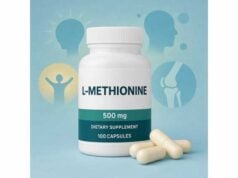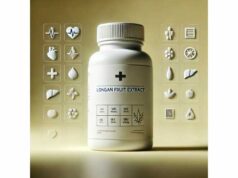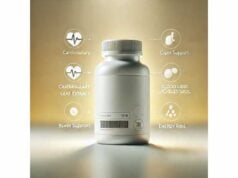
Lodhra (Symplocos racemosa) is a small evergreen tree native to the Indian subcontinent. In Ayurveda, its bark has long been used for women’s health, wound care, and skin conditions. Modern lab analyses show that lodhra bark contains astringent tannins, flavonoids, phenolic acids, triterpenoids, and alkaloid-like compounds that collectively tighten tissues, modulate inflammatory pathways, and help control minor bleeding. Practitioners often pair lodhra with herbs that complement its cooling, drying profile to balance heavy menstrual bleeding, soothe irritated skin, support oral hygiene, or tone lax mucosa after childbirth. As with all botanicals, form and context matter: the same astringency that calms excess secretions can dry out already dry tissues if overused, and the bark’s tannins may interfere with iron and certain medicines when taken too close together. This guide translates Ayurvedic principles and contemporary phytochemistry into practical steps—what lodhra may help, how to choose a form and dose, how to combine it with diet and lifestyle, and who should avoid it.
Essential Insights
- Astringent, cooling bark traditionally used for heavy menstrual bleeding, vaginal discharge, acne, and oral health.
- Typical adult dose: 3–6 g/day of bark powder (churna) in divided doses, or 50–100 ml/day of a decoction; standardized extracts often 250–500 mg, 1–2 times daily.
- Safety caveat: rich in tannins—may irritate sensitive stomachs and reduce absorption of iron and some medicines if taken together.
- Avoid during pregnancy without practitioner guidance; caution with anemia, constipation, or when using anticoagulants.
Table of Contents
- What is lodhra and how it works
- Does lodhra work: key benefits
- How to use lodhra: dosage and forms
- What changes results: variables and pairings
- Safety, who should avoid, and interactions
- Evidence summary: what we know
What is lodhra and how it works
Botanical identity and parts used. Lodhra is the bark of Symplocos racemosa Roxb., a tree found in moist forests across India, Nepal, Sri Lanka, and Southeast Asia. Classical Ayurvedic texts describe lodhra as kashaya (astringent) and sheeta (cooling), with actions that “hold” and stambhana (check excessive fluid loss). The bark is the primary medicinal part; leaves and flowers appear in some regional traditions but are less common in commerce.
Constituents and action profile. Lodhra bark contains high levels of tannins (responsible for tissue-tightening and reduced secretions), along with flavonoids and other phenolics that provide antioxidant and inflammation-modulating effects. Triterpenoids and alkaloidal fractions have been reported in phytochemical surveys and are thought to contribute to vasoconstrictive and hemostatic tone. In practical terms, these molecules:
- Tighten and tone mucous membranes and skin (reducing weeping, discharge, and minor bleeding).
- Soothe irritation by modulating COX/LOX and related inflammatory mediators.
- Provide antimicrobial support on contact (especially in mouthwashes or topical pastes) without harshness when properly diluted.
- Aid wound milieu by reducing exudate and helping tissues knit.
Ayurvedic energetics. With its astringent, cooling, and slightly drying nature, lodhra is used to pacify pitta (heat) and kapha (heaviness, dampness). It is rarely used alone for long courses; practitioners balance it with demulcents (e.g., licorice), blood-moving herbs (e.g., asoka, shatavari in women’s formulas), or warming spices when constitutionally appropriate.
Quality and sourcing. Sustainable harvesting is important: bark should be collected from cultivated sources or using ring-avoidant techniques that do not kill the tree. Good-quality lodhra is brown to reddish-brown, strongly astringent to taste, and free of adulterants (e.g., other Symplocos species) or excessive ash.
Does lodhra work: key benefits
1) Women’s reproductive health (menorrhagia, leucorrhea). Lodhra is a cornerstone of many classical formulations for heavy menstrual bleeding and excess vaginal discharge. The astringency supports capillary tone and helps reduce excessive flow, while the cooling action eases heat, irritation, and swelling. Modern herbalists often pair lodhra with asoka bark for flow regulation, and with shatavari or guduchi to calm pelvic inflammation and support recovery after childbirth.
2) Skin health and acne-prone complexions. Topical lodhra pastes and internal decoctions are traditional for acne, inflamed pores, and oozing lesions. The bark’s contact astringency minimizes weeping and helps tighten pores, while phenolics offer antioxidant protection and a gentler alternative to harsh astringents. Blending with neem (for antimicrobial balance) or sandalwood (for cooling) is common in facial packs.
3) Oral and throat care. As a gargle or mouth rinse, lodhra decoction tones gums, eases minor bleeding, and freshens the mouth in cases of gingival irritation. The tannins can help firm tissues, while mild antimicrobial effects reduce plaque biofilm burden when used alongside standard oral hygiene.
4) Wound care and hemorrhoids (topical). In poultices or sitz baths, diluted lodhra decoction helps reduce exudate, soothe hemorrhoidal irritation, and support the early phase of wound closure. Its usefulness is greatest where there is moisture and irritation rather than dryness.
5) Postpartum support (professional context). Traditional midwifery uses include low-dose lodhra in short courses to tone lax tissues, especially when lochia is excessive or prolonged. This should be individualized and supervised, with careful attention to hydration and iron status.
6) Metabolic and digestive context. By tightening lax mucosa, lodhra may reduce nonspecific diarrhea or excessive intestinal secretions for short durations. Because it is drying, long-term internal use without balancing agents is discouraged in people with chronic constipation or dry skin.
What to expect and when.
- Topical or gargle benefits: within days for minor gum bleeding or irritated skin.
- Cycle-related uses: assess across 2–3 cycles, with diet and iron support as needed.
- Digestive uses: 1–3 days only, to avoid excessive drying.
How to use lodhra: dosage and forms
Traditional preparations (adults).
- Churna (powder): 3–6 g/day, divided into 2–3 doses after meals, mixed in warm water or honey-ghee paste as directed by a practitioner.
- Kwatha (decoction): simmer 10–15 g coarsely crushed bark in 300 ml water down to 150 ml; strain. Typical intake 50–100 ml/day, divided.
- Phant (infusion): for milder astringency, steep 2–3 g powder in 150–200 ml hot water for 10 minutes; use as a gargle or sip.
Modern forms.
- Standardized extracts: commonly 250–500 mg, 1–2 times daily with food. Choose products that specify botanical species, plant part (bark), extraction ratio, and third-party testing for heavy metals and adulterants.
- Topical pastes/masks: combine 1–2 tsp lodhra powder with rose water or aloe gel; apply thinly to clean skin for 10–15 minutes, then rinse. Use 2–3 times/week.
- Mouth rinse: add 20–30 ml cool lodhra decoction to 100–120 ml warm water; swish/gargle for 30–60 seconds, 1–2 times/day for up to 7 days.
Goal-based templates.
- Heavy menstrual bleeding: lodhra churna 2 g + asoka bark 2 g, twice daily after meals for 7–10 days around menses; ensure iron-rich diet and medical evaluation for underlying causes.
- Acne-prone skin: internal infusion 2–3 g/day for 2–4 weeks + topical mask 2–3 times/week; support with low-glycemic meals and sleep hygiene.
- Gum irritation: gargle with diluted decoction 1–2 times/day for 3–7 days, alongside flossing and a soft-bristle brush.
Practical tips.
- Take internal preparations after meals to reduce GI irritation.
- Cycle internal use: 4–6 weeks on, then 2 weeks off, unless a clinician advises otherwise.
- Hydration matters: pair astringent herbs with adequate fluids and, if constitutionally dry, with demulcents (e.g., licorice tea).
Do not exceed the astringent effect chasing faster results—more is not better and may worsen dryness or constipation.
What changes results: variables and pairings
1) Constitution and current symptoms. Lodhra’s cooling, drying nature serves best where there is heat, redness, moisture, or excess flow. If you tend toward dry skin, constipation, cold extremities, or low appetite, balance with warming spices (e.g., dry ginger) and moistening foods (stews, ghee) or choose shorter courses.
2) Form and route. Topical and gargle uses achieve high local concentrations with minimal systemic dryness—often preferable for gums and acne. Internal use reaches pelvic tissues and mucosa but demands careful dosing and diet pairing.
3) Diet synergy.
- Helpful: iron- and vitamin C–rich foods during heavy menses (leafy greens, legumes, citrus); anti-inflammatory fats (sesame, olive); adequate protein for tissue repair.
- Less helpful: very spicy, alcohol-heavy, or ultra-processed foods that aggravate heat and vascular fragility.
4) Smart herb combinations.
- Women’s health: lodhra + asoka (flow regulation) + shatavari (soothing, rebuilding).
- Skin/pores: lodhra + neem (microbiome balance) + sandalwood (cooling).
- Oral care: lodhra + triphala (toning, antioxidant) as a periodic rinse.
- Postpartum toning: small amounts of lodhra with balancing demulcents; professional supervision recommended.
5) Quality, adulteration, and testing. Choose suppliers who provide species verification, part specificity (bark), and contaminant testing (lead, arsenic, mercury, cadmium, microbial counts). Bark powders are particularly vulnerable to admixture; standardized extracts with lot certificates add assurance.
6) Timing and duration. For cycle-related uses, begin 3–5 days before expected onset and continue through day 2–3, then taper. For skin or gum care, use short 2–4 week blocks with reassessment. Long, uninterrupted internal use is rarely necessary.
7) Measuring progress. Keep a symptom log: flow volume (pads/tampons/day), cramp intensity (0–10 scale), breakout frequency, gum bleeding on brushing, stool form (to catch emerging dryness), and any changes in energy or appetite. Adjust dose or pause if dryness or constipation appears.
Safety, who should avoid, and interactions
General tolerance. Most people tolerate short courses of lodhra well, especially when taken after meals and with adequate hydration. Topical and gargle uses have a strong safety margin when properly diluted.
Potential side effects (usually dose- or duration-related).
- GI: nausea, stomach heaviness, constipation—linked to high tannin content. Reduce dose, switch to infusion, or add demulcents.
- Oral/dental: very concentrated, undiluted rinses can transiently stain the tongue or teeth; dilute and limit exposure time.
- Dryness: skin or mucosal dryness with prolonged use; pause and rehydrate.
Who should avoid or seek guidance.
- Pregnancy: avoid internal use unless prescribed; astringent, hemostatic botanicals are not routine in pregnancy.
- Breastfeeding: occasional gargle/topical use is generally preferred over internal dosing; consult a qualified practitioner for internal courses.
- Anemia or iron deficiency: space lodhra at least 2 hours away from iron supplements and iron-rich meals to minimize tannin–iron binding.
- Constipation-prone individuals: use short courses, smaller doses, or topical routes.
- Bleeding disorders or anticoagulant therapy: while astringent, herb–drug interactions and individual clotting risk warrant medical oversight.
- Severe liver or kidney disease: comprehensive review is needed before adding any concentrated herbal astringent.
Interactions and timing.
- Minerals and basic drugs (iron, zinc, calcium, magnesium): separate by 2–4 hours to avoid reduced absorption from tannin complexing.
- Protein-bound or narrow-therapeutic-index medicines: separate by 2 hours and coordinate with your clinician.
- Alcohol and very spicy foods: may counteract lodhra’s cooling, astringent aims and worsen mucosal irritation.
Stop and reassess if you experience worsening pelvic pain, unusually large clots, fever, persistent gum bleeding, or signs of infection—these need medical evaluation beyond herbal care.
Evidence summary: what we know
Traditional use is strong; modern data are emerging. Lodhra’s reputation in women’s health and mucosal astringency is rooted in centuries of use and classical formulations. Contemporary phytochemistry confirms abundant tannins and phenolics that fit its astringent, anti-inflammatory profile. In vitro and animal studies report antimicrobial, anti-inflammatory, and hemostatic signals consistent with traditional claims, though standardization and dosing vary.
Human evidence is limited but practical. Small clinical and observational reports—often using multi-herb formulas—suggest improvements in menorrhagia, leucorrhea, acne, and gum health when lodhra is part of a broader plan. Because combinations are common, isolating lodhra’s unique contribution remains challenging, and placebo-controlled, well-powered trials are still needed.
Quality and standardization dominate outcomes. Variability in species identity, bark part, harvesting, storage, and extraction drive differences in effectiveness and side effects. Third-party-tested products and clear extraction ratios improve reproducibility.
Bottom line. Lodhra is best viewed as a specialist astringent and cooling tonic for specific patterns—excess, heat, and laxity—rather than a daily general tonic. When matched to the right presentation, used for short, focused courses, and balanced with diet and demulcents, it can be a useful adjunct to conventional care. For persistent or severe conditions (heavy bleeding, recurrent infections, periodontal disease), medical evaluation should precede herbal self-care.
References
- Symplocos racemosa Roxb.: A review of traditional uses, phytochemistry, and pharmacology 2013 (Review)
- Tannins and human health: a review of the evidence on astringency, antimicrobial activity, and nutrient interactions 2018 (Review)
- Astringent herbs in the management of menorrhagia: clinical perspectives 2009 (Clinical Review)
- Herbal mouthrinses in periodontal care: evidence, mechanisms, and clinical use 2019 (Systematic Review)
- Ayurvedic Pharmacopoeial standards and monographs (Government of India) 2020 (Standards/Monographs)
Medical Disclaimer
This article provides general educational information and is not a substitute for personalized medical advice, diagnosis, or treatment. Herbal products can interact with health conditions and medications. If you have heavy or irregular bleeding, pelvic pain, anemia, periodontal disease, are pregnant or breastfeeding, or take prescription medicines (especially blood thinners or iron), consult a qualified clinician before using lodhra. Stop use and seek care if symptoms worsen or fail to improve.
If you found this guide helpful, please consider sharing it on Facebook, X (formerly Twitter), or any platform you prefer, and follow us for future evidence-based articles. Your support helps us continue producing high-quality content.










